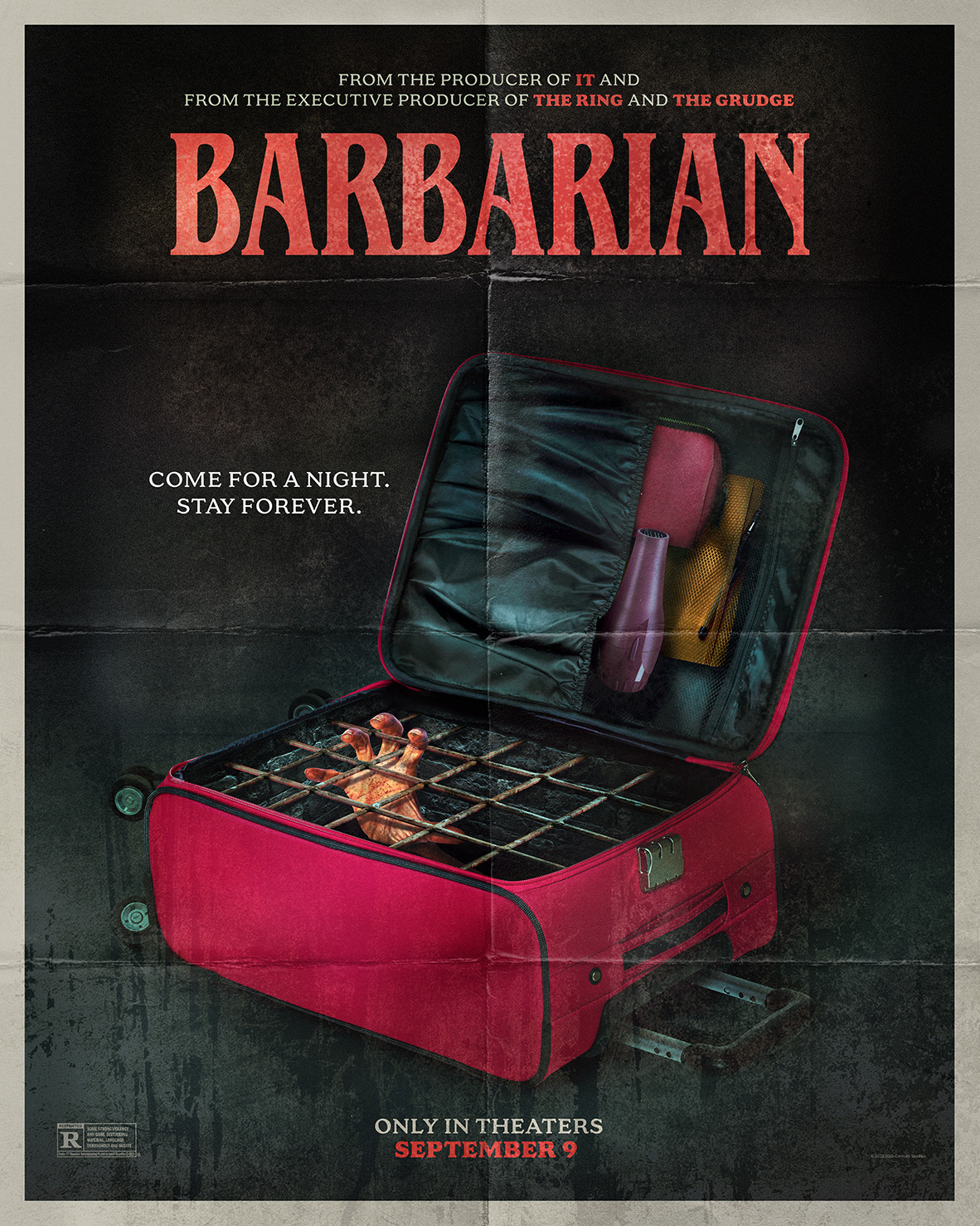In the late summer of 2022, a movie was released about a young black woman who arrives for a stay at a rental property she reserved, only to discover that it’s been double booked and is currently occupied by a strange white man with unknown intentions. Suspicious, she reluctantly agrees to share the abode with him, at which point unimaginable horrors ensue. The film I’m describing, of course, is Love in the Villa, with Kat Graham and Tom Hopper:
But I could also be describing Barbarian, which actually is more appropriate for this site, so we’ll stick with that.
Barbarian stars Georgina Campbell as Tess, a woman who finds herself in the aforementioned predicament with Keith (Bill Skarsgård, minus whiteface), but rather than Love in the Villa’s Verona, Italy setting, they’re shacking up in the less romantic and more homicidal locale of Detroit, Michigan.
I won’t spoil the plot—it’s one of those films that’s best enjoyed blind—but suffice it to say that things get weird for everyone involved. The story is actually not all that original for horror fare, but Barbarian is a testament to the power of HOW a story is told. It plays almost like three movies combined into one, each with a distinct tone and central character. It jumps, jarringly, almost comically, from one to another, keeping viewers on their toes in a way they wouldn’t experience the film if told in a more linear fashion.
Credit goes to writer-director Zach Cregger, a founding member of the comedy troupe The Whitest Kids U’ Know whose only previous feature film directorial effort was the 2009 sex comedy Miss March. As with fellow comedian-turned-horror-filmmaker Jordan Peele, Cregger’s shift from comedy to horror is seamless. Comedy hones one’s ability to look at conventions in a different light and toy with audience expectations, which Cregger does for much of Barbarian. Of course, he throws in a dose of humor, but it’s very restrained and dark—nothing that should make someone label this a horror comedy.
Although Tess is black, she’s written about as race-neutral as possible. She’s not from Detroit, so she’s not lumped in with the 80% black population of that city. It’s conceivable that a lot of viewers don’t even recognize Campbell, a light-skinned, mixed-race actress, as black. There are a couple of hints, however. Early on, she ignores phone calls from someone named “Marcus”—presumably the controlling boyfriend she mentions in passing—a name that leans blacker than the average American Aiden, Kaiden and Fillaiden. In a later scene, she peers into the darkness of a secret room she finds in the basement and utters, “Nope,” with the caution of a black person who knows better. However, her overly curious white side takes over, and she ventures in anyway, because otherwise, this would be a very short movie.
Race is never mentioned in Barbarian, but the story takes place in a particularly “bad”—and very much real—part of Detroit [insert “Is there a good part of Detroit?” joke here] called Brightmoor, nicknamed “Blight More” by locals. The lone personification of that seediness is a black homeless man named Andre (Jaymes Butler) who plays good Samaritan and gets rewarded as good Samaritans—particularly black ones—do in horror movies. Is it a sign of progress that he dies helping a black woman instead of a white one? So be it.
Barbarian touches upon the “white flight” out of the city that saw the white population of Detroit drop from 80% in the ‘50s to 10% today, using it as a means to isolate Tess in an abandoned neighborhood. While it doesn’t try to get too deep, the film takes time to feature the dismissive attitude of police toward Brightmoor’s mostly black, lower class residents—further cementing the fact that Tess is on her own. In a way, she comes to embody the neighborhood’s residents: neglected and left to die, with little means of escape. Because of her desolate surroundings, Barbarian is almost like a “backwoods” horror movie in an urban setting.
More central to the story is the theme of violence against women, with Tess taking the form of an Everywoman (noteworthy for a black actress) who’s put in a situation that demands the sort of heightened paranoia to which women must attune themselves on a daily basis. The first portion of the film is rife with unnerving tension as viewers, in Tess’s shoes, try to read Keith’s intentions and figure out if a roof over her head is worth the potential for being thrown into a torture dungeon. Cregger masterfully draws out the discomfort, building anxiety by letting our imaginations do the frightening, before undercutting it all with a wry sense of humor propelled by Justin Long’s punchable character, AJ. Campbell excels as Tess, lending the sort of vulnerability needed for us to truly be concerned for her safety, but ultimately displaying the strength and resilience to endure an ordeal that should have killed her three times over.
Barbarian is one of the most fun horror experiences of 2022, and it’s a true pleasure to see that it stars a black “Final Girl”…even if some people don’t realize she’s black.
